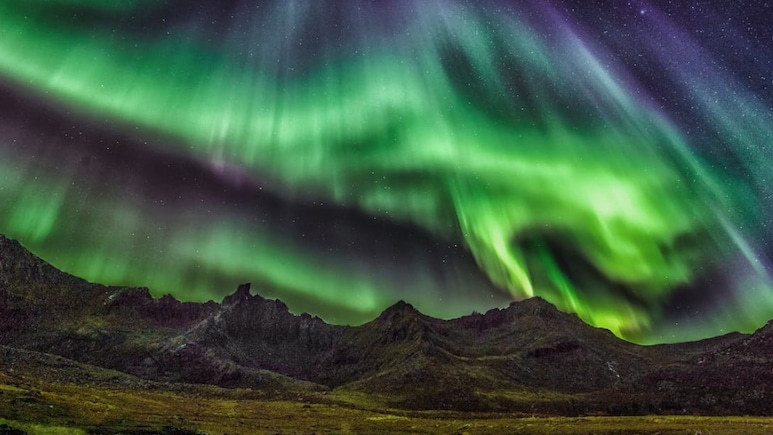
- Northern Lights may be visible in over a dozen US states on October 28-29 nights
- Solar wind speeds expected to reach 500-600 km/s, enhancing aurora visibility
- Visibility depends on storm strength, location, and weather conditions
Over a dozen states in the United States may be treated to a dazzling display of the Northern Lights on Tuesday night into Wednesday. Notably, the Northern Lights occur when solar winds collide with Earth's atmosphere, producing vibrant, shifting patterns of light. These displays often feature a mix of colours, including green, pink, red, and purple.
According to NOAA's Space Weather Prediction Center (SWPC), geomagnetic storm activity is expected to increase, creating favourable conditions for aurora sightings across parts of the country this week. Aurora activity is forecast to vary between October 28 and the evening of October 29, with Tuesday and Wednesday nights offering the best viewing opportunities.
This heightened activity is due to a combination of fast-moving solar wind from a large, Earth-facing coronal hole and the lingering effects of a weak coronal mass ejection (CME) that arrived on October 27. As a result, solar wind speeds could rise to 500-600 km/s during this period, presenting ideal conditions for northern lights sightings.
However, visibility depends on factors like the storm's strength, your geographic location, and local weather conditions.
Possible States Where Aurora May Be Visible:
- Alaska
- Washington
- Oregon
- Idaho
- Montana
- Wyoming
- North Dakota
- South Dakota
- Minnesota
- Wisconsin
- Michigan
- New York
- Vermont
- Maine
How to see the northern lights
1. Go Somewhere Dark: Get far from city lights and light pollution. Look for rural areas, open fields, hills, or parks.
2. Check the Sky: You need clear skies as clouds will block the view. Use weather apps like Windy or AccuWeather to check cloud cover.
3. Face the Right Direction: Auroras usually appear low on the northern horizon, unless you're far north (like Alaska).
4. Go at the Right Time: Best time: 10 PM - 2 AM (local time).Check live aurora forecasts on apps or sites like Aurora Forecast, NOAA Space Weather Prediction Center, My Aurora Forecast
5. Let Your Eyes Adjust: Allow 15-30 minutes for your eyes to adjust to the dark. Avoid phone screens and bright lights during this time.
Track Latest News Live on NDTV.com and get news updates from India and around the world

